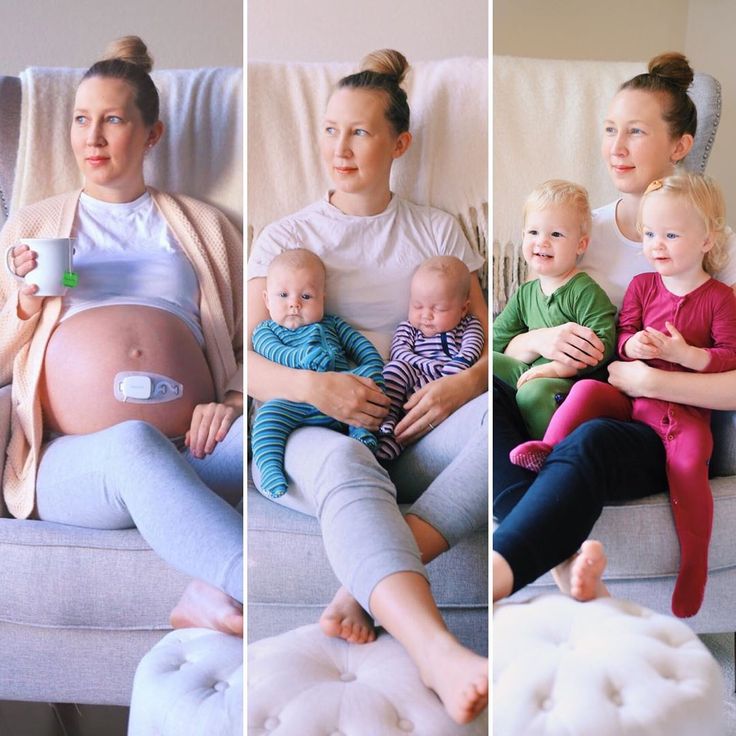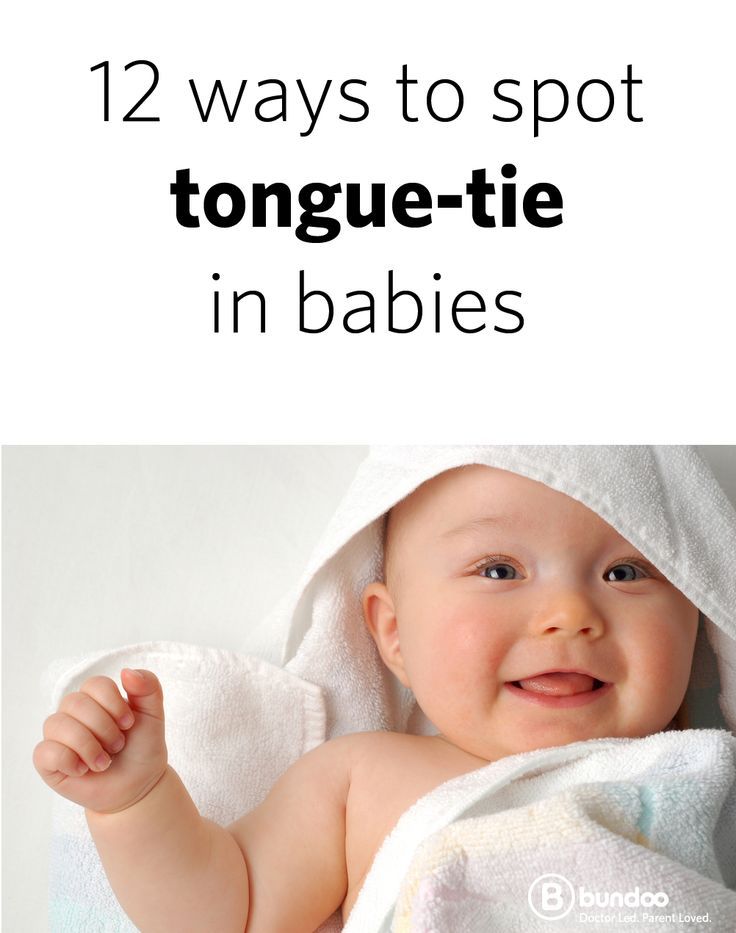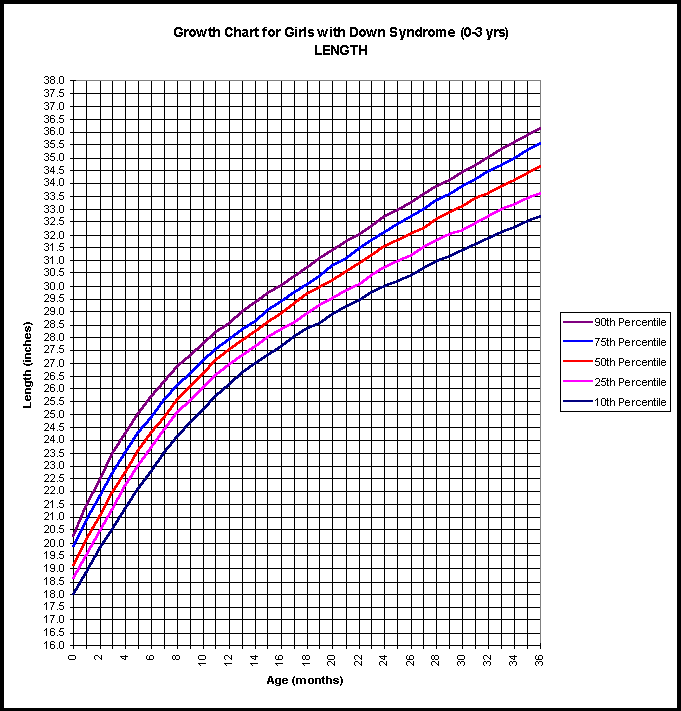Twins pregnancy stages
Twin Pregnancy Week by Week
So, you’ve hit the jackpot—you’re pregnant with twins! While you’re adjusting to this life-changing news, your little ones are already growing and preparing to meet you! As you embark on this double adventure, it can be helpful to know about some of the common twin pregnancy symptoms that may await you week by week.
Twin Pregnancy: First Trimester
In the first few weeks of your twin pregnancy, you might notice some typical signs of early pregnancy, such as breast tenderness, fatigue, nausea, and a missed period. During your first trimester, a home pregnancy test can confirm your hunch that you're pregnant, and eventually an ultrasound scan at your healthcare provider's office will reveal you are pregnant with twins.
Although the first few weeks are a little uneventful, the first few months are quite exciting! Both of your babies develop from a cluster of cells to a tiny fetus with a heart, spinal cord, head, and limbs.
Read on to learn about twin pregnancy development and symptoms, week by week during the first trimester.
3 Weeks
After the first three weeks of pregnancy, you may start to feel a few pregnancy symptoms. And when it comes to a twin pregnancy, there’s quite a lot going on in that belly of yours, which is now nurturing either identical or fraternal twins.
Identical twins. When a sperm fertilizes an egg, it becomes a single cell called a zygote, which has 46 chromosomes that determine your baby’s sex and physical traits. When you have one zygote that splits into two during early pregnancy and grows into separate embryos, you’ll have identical twins. Because they come from the same zygote, they will have the same chromosomes and be the same sex.
Fraternal twins. If you have two zygotes, from two eggs fertilized by different sperm, these twins will not be identical and can be either the same or different sex. Fraternal twins are more common than identical twins.

4 Weeks
At around 4 weeks pregnant, some important developments occur, including implantation. This is when you may notice one of the first symptoms of pregnancy, which is implantation bleeding.
Implantation in the uterus. Around eight or nine days after fertilization, the rapidly dividing ball of cells, now known as a blastocyst, will burrow into the lining of the uterus. Each blastocyst, two in the case of a twin pregnancy, will grow into an embryo.
The placentas begin to grow. About one week later, the outer layer of the blastocyst will begin to form a placenta for each baby, providing nourishment over the course of your pregnancy. In some rare cases, the babies may share one placenta.
5 to 8 Weeks
When tracking pregnancy symptoms week by week, whether with one baby or twins, 5 to 8 weeks pregnant is when nausea and vomiting—aka morning sickness—might kick in. Though the precise cause or causes of this condition are unknown, the pregnancy hormone human chorionic gonadotropin (hCG) may be a contributing factor.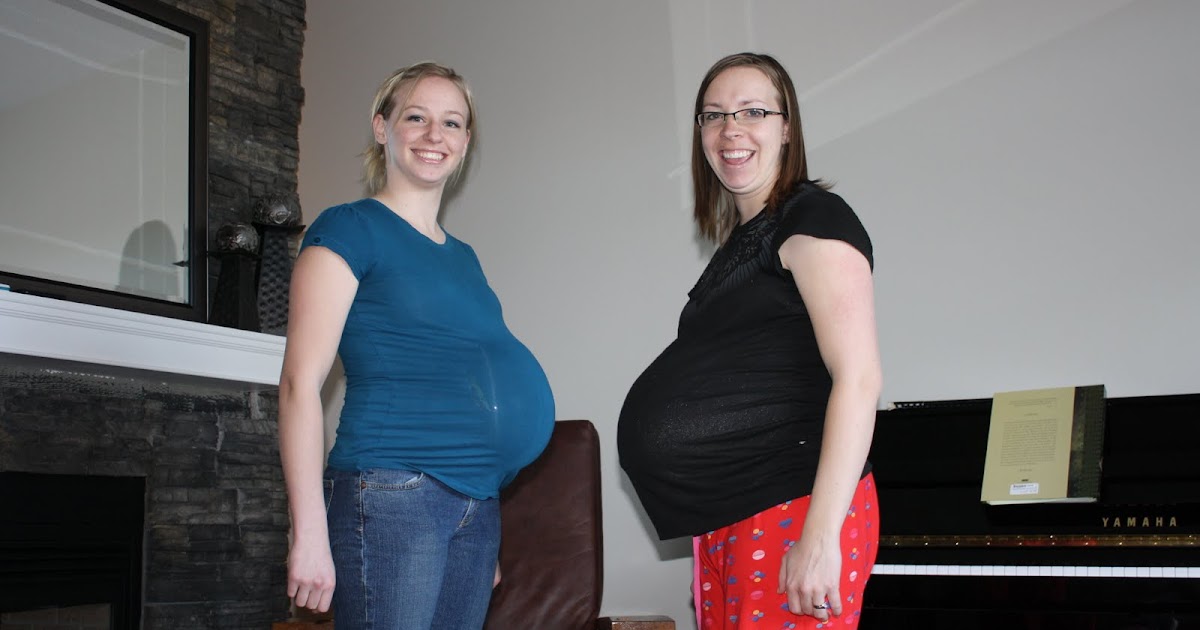 No one loves having this unpleasant symptom, which can be (but isn’t always) more severe during a twin pregnancy, but many moms-to-be choose to think of it as a sign that their pregnancy is going well! This is important considering all the growth and development your babies are experiencing during this time:
No one loves having this unpleasant symptom, which can be (but isn’t always) more severe during a twin pregnancy, but many moms-to-be choose to think of it as a sign that their pregnancy is going well! This is important considering all the growth and development your babies are experiencing during this time:
Your twins start forming brains and spinal cords. Around 6 weeks, your babies’ spinal cords and brains will develop from the neural tubes.
Little arms and legs start to form. By 8 weeks of your twin pregnancy, your babies will have buds for limbs that look like little paddles.
Two heartbeats. The tissues that form your babies’ hearts will begin to develop at this time. Heartbeats may even be detected during an ultrasound exam offered by your healthcare provider during this trimester. Ultrasound is the way most women find out they are pregnant with twins, often at around 12 weeks of pregnancy.
All major organs take shape.
 By the end of 8 weeks, all your babies’ major organs will have started to develop.
By the end of 8 weeks, all your babies’ major organs will have started to develop.
9 to 13 Weeks
As you enter the final weeks of the first trimester, you may be surprised to learn what’s happening in that baby bump of yours.
Fingers, toes, and nails begin to appear. Your tiny duo will start to develop fingers, followed by little toes taking shape; by 12 weeks, fingernails will also begin to sprout.
Facial features take shape. Twelve weeks into your pregnancy, your twins’ faces are less broad and more defined. Your babies will have eyelids and a more developed profile, with a formed nose, eyes, and upper lip.
Tooth buds form. Your babies’ future teeth are already in place, as tooth buds have appeared under the gums.
Your Twin Pregnancy in the Second Trimester
Twin pregnancy symptoms, when tracked week by week, aren’t too different from those in a singleton pregnancy.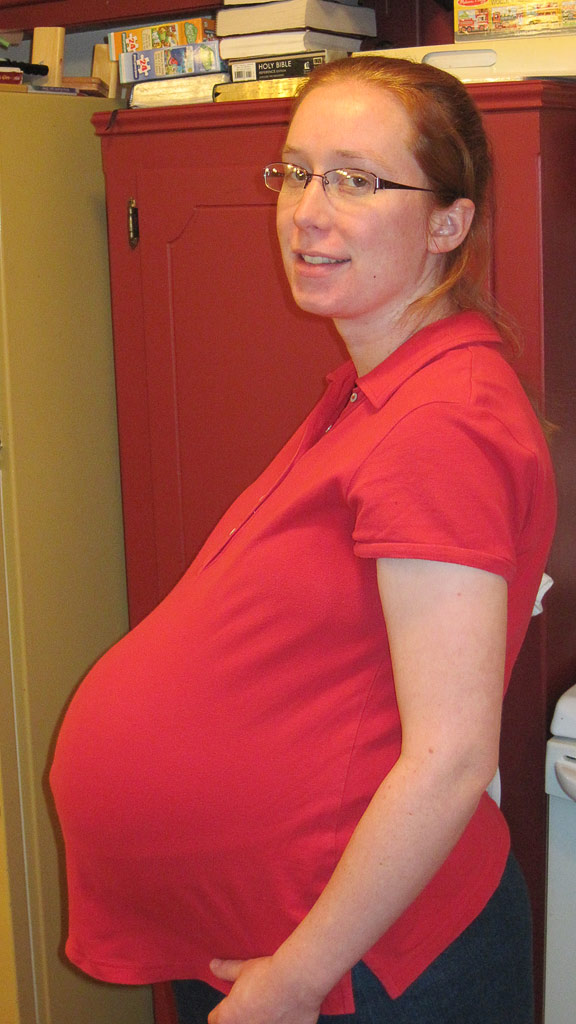 However, twin moms-to-be usually show their bumps sooner, and during the second trimester, it will become increasingly obvious that you’re pregnant with twins. You might also feel more uncomfortable and tired than singleton moms during this time or gain more weight, which is completely normal—after all, your body is a nourishing home to two developing babies!
Read on to learn about twin pregnancy development and symptoms, week by week during the second trimester.
However, twin moms-to-be usually show their bumps sooner, and during the second trimester, it will become increasingly obvious that you’re pregnant with twins. You might also feel more uncomfortable and tired than singleton moms during this time or gain more weight, which is completely normal—after all, your body is a nourishing home to two developing babies!
Read on to learn about twin pregnancy development and symptoms, week by week during the second trimester.
14 to 17 Weeks
The beginning of your second trimester is a busy time for your babies. They’re gaining weight and becoming more active. As for you, you’re entering what’s known as the golden period of pregnancy, when morning sickness and fatigue finally start to subside, and you feel more energized.
Limbs will move. Your babies will start to jerk their arms and legs, but you probably won’t be able to feel anything until they’re a bit bigger.
Bones start to harden.
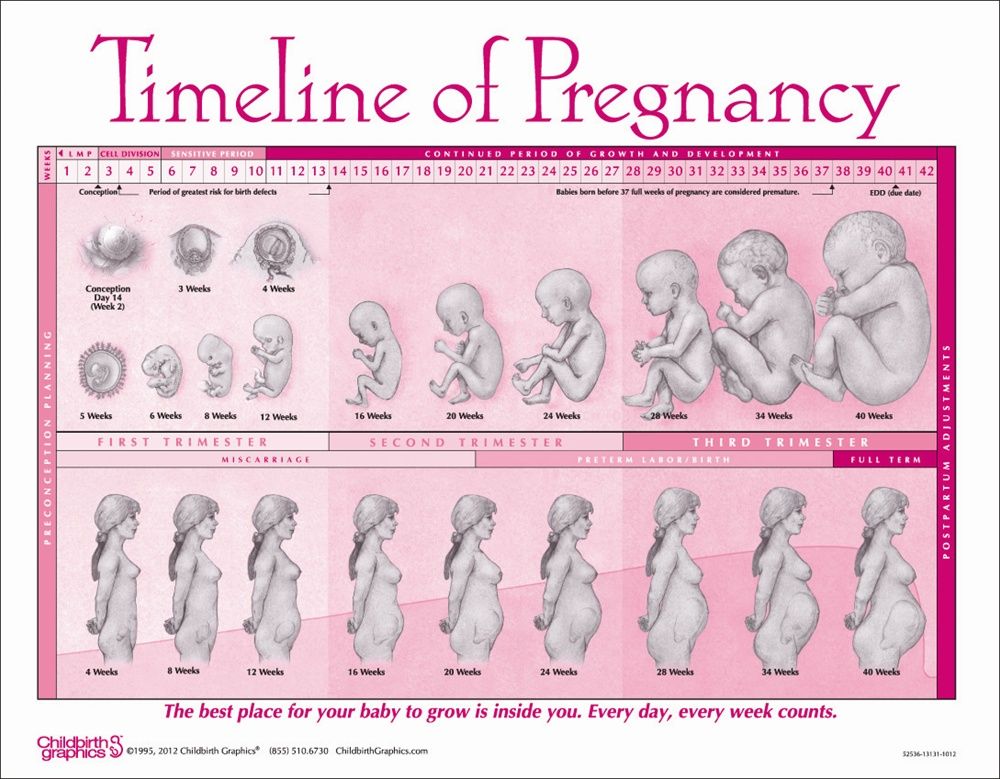 The bones of your twins will begin to harden, particularly the head and long bones.
The bones of your twins will begin to harden, particularly the head and long bones. Little eyes may move. Although their eyes are still closed, at 16 weeks, your babies can slowly move their eyes behind the lids. Your little ones should also have eyebrows and eyelashes at this point, too.
A protective coating forms on the skin. Your babies will start to acquire a greasy, waxy coating known as vernix, which helps shield their skin from the amniotic fluid.
18 to 22 Weeks
A few new aches and pains could crop up at this time, thanks to your growing uterus and hormonal changes. To help ease the discomfort, try adding some exercise to your daily routine, if your healthcare provider gives you the OK. Exercising while pregnant may not only minimize discomfort but also help boost your energy level and increase blood circulation, which benefits your twins.
Your twins may suck their thumbs. Your growing duo will develop the sucking reflex and may even suck their thumbs.
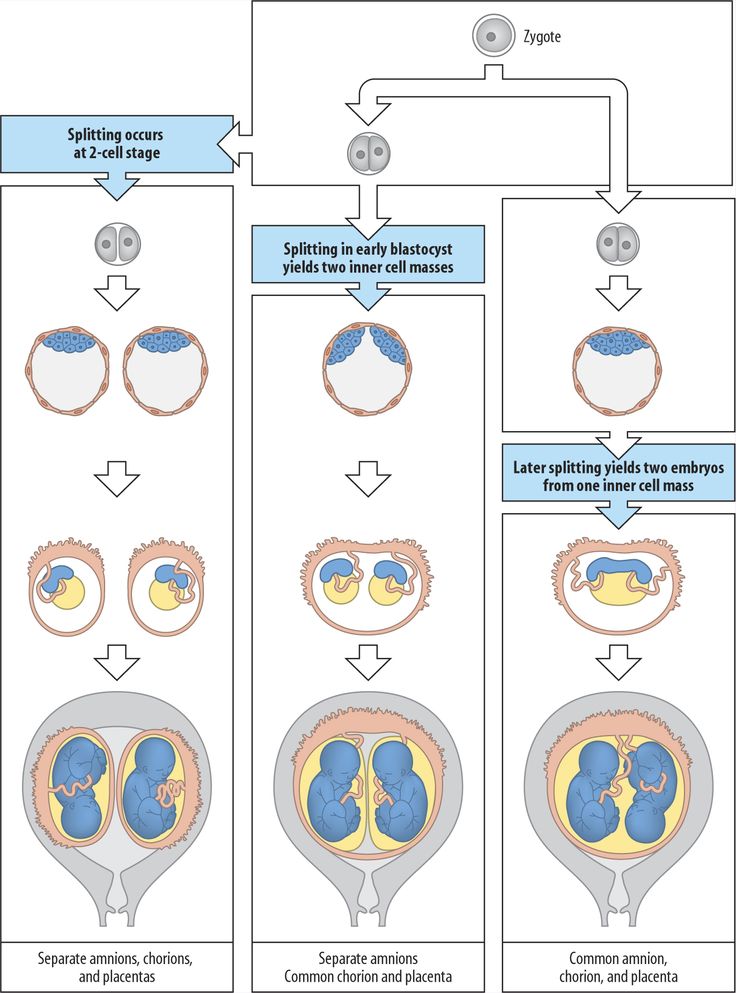
Your babies get active. During these weeks you may detect some gentle fluttering or wriggling. Before long, these movements will morph into kicks and jabs!
Your babies can hear. By 18 weeks, your babies may even begin to hear, and their ears will begin to stand out at the side of the head.
Your babies grow hair. Just after 20 weeks, your babies will be covered with a fine, downy protective hair called lanugo. Not only that, your little ones are also continuing to grow eyebrows and hair on their heads!
23 to 27 Weeks
You may start to develop some new symptoms as your twin pregnancy progresses week by week in the second trimester. For example, it’s possible to feel Braxton Hicks contractions, a sign that your body is practicing for labor. These practice contractions are also known as false labor, as they’re not the real deal. Your babies are also making progress and getting ready for their big entrance.
Your twins form fingerprints. Ridges in your babies’ palms and soles are becoming fingerprints and footprints.
Your babies can respond to sound. Your babies may begin to move in response to familiar sounds, such as your voice.
Little lungs develop. At around 26 weeks, the lungs forming in your babies' chests are slowly preparing to make breathing motions. They are producing a substance called surfactant that helps the air sacs in the lungs stay inflated, which is necessary for breathing.
Your Twin Pregnancy in the Third Trimester
In the third trimester, some of the most common twin or singleton pregnancy symptoms that could appear week by week include backaches as well as swelling in your hands, feet, and legs. As a result, you might find it hard to sleep or walk comfortably.
Meanwhile, your twins are getting ready for the big day! During this time, they’re listening to familiar sounds, such as your voice, and are likely settling into the optimal position for a vaginal delivery, which means both babies have their head down.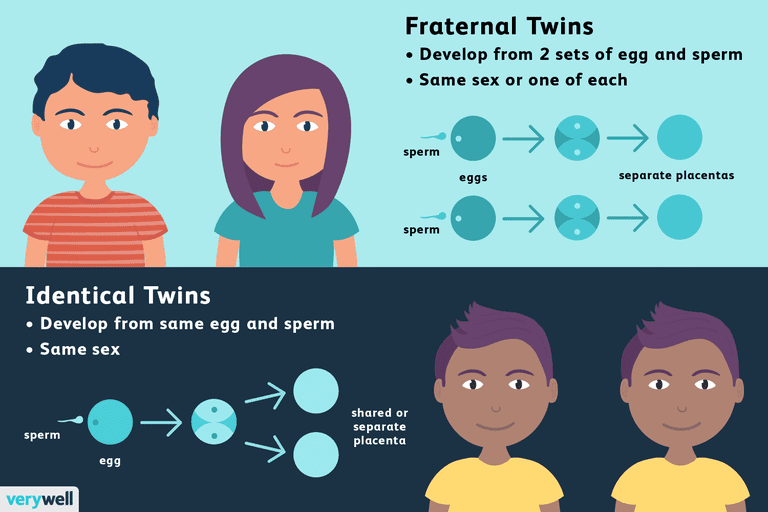 In some cases, only one twin may be facing headfirst, or both twins are facing feet first. Check the visual below to get an idea of how your babies might settle in the womb. And keep in mind that with twin pregnancies, there’s a higher likelihood of needing a cesarean delivery or giving birth prematurely.
In some cases, only one twin may be facing headfirst, or both twins are facing feet first. Check the visual below to get an idea of how your babies might settle in the womb. And keep in mind that with twin pregnancies, there’s a higher likelihood of needing a cesarean delivery or giving birth prematurely.
Although you might have checked our due date calculator, be aware that in an average twin pregnancy, twins are born closer to 35 weeks than to 40 weeks, so it’s worth getting prepared early. Make sure you have doubles of all the clothes, cribs, wipes, and diapers you’ll need! And since double the fun means double the price, earn cash and rewards by downloading the Pampers Club App.
Read on to learn about twin pregnancy development and symptoms, week by week during the third trimester.
28 to 32 Weeks
At this stage, your body is making more blood than it usually does, and your heart is pumping quickly to circulate it throughout your body. And, naturally, your baby bump continues to expand week by week, as your twins grow and develop.
Your twins can open and close their eyes. Your twins may be able open and close their eyes and sense changes in light. However, they will spend most of their time sleeping with eyelids closed.
Brains growing. Your babies’ brains are growing quickly at this stage of your pregnancy. Parts of the brain can now control body temperature, so your twins are not solely dependent just the temperature of the amniotic fluid to stay warm.
Your twins have finished their major development. By now, your babies will have finished most of their development and start to gain weight rapidly. At 32 weeks, your babies may start to shed their lanugo, the fine hair that covered their bodies.
33 to 36 Weeks
As mentioned above, those who are pregnant with twins can expect an earlier delivery. So, at this point in your twin pregnancy, you’re in the home stretch, and your babies know it!
The lungs are preparing to breathe.
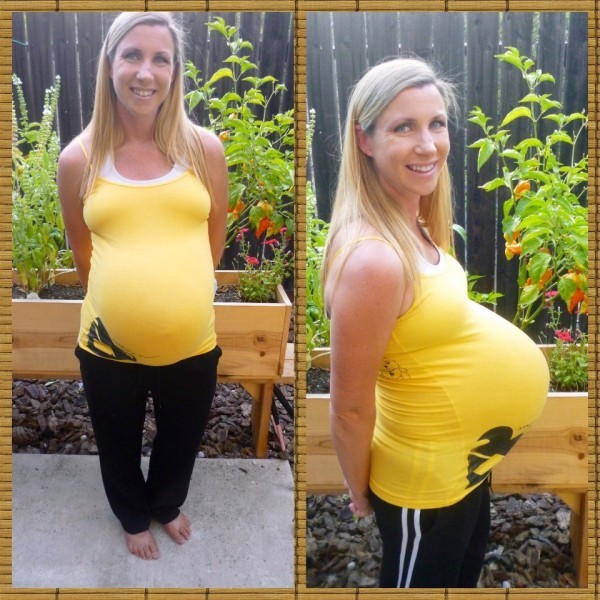 Your babies’ lungs are maturing and preparing to breathe outside the womb.
Your babies’ lungs are maturing and preparing to breathe outside the womb. Twins gaining weight. During the last few weeks of your pregnancy, your twins will continue to build fat layers and put on weight. Most twins will be born smaller than singleton babies, weighing on average 5.1 pounds.
Getting ready for birth. Most women give birth between 37 and 42 weeks. However, if you’re expecting twins, you could give birth as early as 35 weeks, so keep an eye out for any signs of labor and discuss your options with your healthcare provider.
In the video below, watch one of our partner nurses offer advice on when to head to the hospital as the signs of labor begin.
The Bottom Line
Were you not expecting two for the price of one? After the initial surprise of a twin pregnancy, it’s completely natural to feel overjoyed, overwhelmed, or even shocked for a while! But, knowing the symptoms of a twin pregnancy and what awaits you week by week can help you feel confident along the way and offer some peace of mind.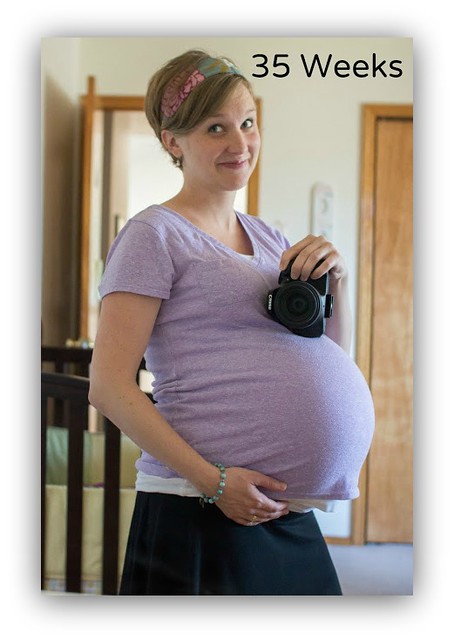 In some ways, a twin pregnancy isn’t that different than a singleton one. You’ll have a larger baby bump, of course, and you may feel more tired or experience other symptoms to a greater degree; but you’ll make similar progress as the weeks and months go by and your due date approaches.
However, to summarize a few important differences, a twin pregnancy might include
In some ways, a twin pregnancy isn’t that different than a singleton one. You’ll have a larger baby bump, of course, and you may feel more tired or experience other symptoms to a greater degree; but you’ll make similar progress as the weeks and months go by and your due date approaches.
However, to summarize a few important differences, a twin pregnancy might include
more checkups with your health provider
increased weight gain
an earlier delivery
your twins needing a little extra time in the hospital
higher risk for cesarean delivery and premature birth.
Think of it this way: though a twin pregnancy comes with its share of challenges, having twins means there are two babies to love and bring joy into your life! Hang in there and enjoy the journey as much as possible. You’ll be amazed to discover how your heart will grow twice as much!
Twins in the womb week by week: Fetal development and more
- Community
- Getting Pregnant
- Pregnancy
- Baby names
- Baby
- Toddler
- Child
- Health
- Family
- Courses
- Registry Builder
- Baby Products
Advertisement
Fraternal – nonidentical – twins develop from two separate fertilized eggs. By 6 weeks, their hearts are beating, and at 8 weeks all of their major organs start developing. The twins' faces take shape, with closed eyelids, at 12 weeks, and at 16 weeks their sex organs are apparent. At 24 weeks they begin to store fat and are working on making blood cells and developing their lungs. In the weeks following, the babies continue to grow and learn to control their body temperature. The average birth week for twins is 36 weeks, and by then all body systems are functioning.
By 6 weeks, their hearts are beating, and at 8 weeks all of their major organs start developing. The twins' faces take shape, with closed eyelids, at 12 weeks, and at 16 weeks their sex organs are apparent. At 24 weeks they begin to store fat and are working on making blood cells and developing their lungs. In the weeks following, the babies continue to grow and learn to control their body temperature. The average birth week for twins is 36 weeks, and by then all body systems are functioning.
Photo credit: Thinkstock
HOW THEY GROW
We asked renowned medical illustrator Peg Gerrity to take us inside the womb to see how fraternal twins develop from the moment of implantation until they're ready to be born. The embryonic and fetal development of twins in the womb parallels that of singletons – they develop on the very same schedule. Around 26 weeks of gestation twins do slow down a bit in growth in comparison to singletons, as their environment gets pretty crowded!
3 WEEKS: Twins implantation
Nonidentical twins like these (also known as fraternal or dizygotic twins) are the most common.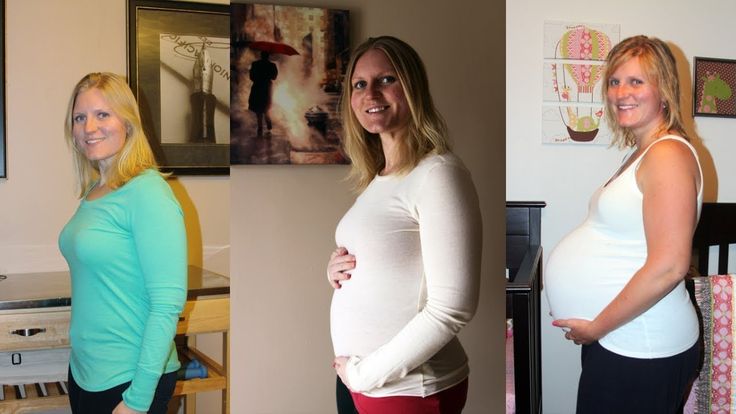 Each baby grows from a separate fertilized egg (zygote). Each has their own placenta and amniotic sac.
Each baby grows from a separate fertilized egg (zygote). Each has their own placenta and amniotic sac.
By 3 weeks, each zygote has developed into a ball of several hundred cells, called a blastocyst, and is burrowing into the uterine lining. Because they have different chromosomes, your fraternal twins may or may not be the same gender.
(On the other hand, if you're having identical twins, that means one egg was fertilized and split into two, creating two embryos. They will share a placenta but may or may not have their own amniotic sac. Because they have the same chromosomes, they will look alike and be the same gender.)
4 WEEKS: Twin embryos
The twins are now embryos, made up of two layers of cells from which all the organs and body parts will develop. The embryonic stage is where all organs and critical body structures are formed. Buds are growing where arms and legs will develop, the heart is forming, and the tube that will contain the brain and spinal cord has rolled up. By next week, each embryo will have an amniotic sac and placenta.
By next week, each embryo will have an amniotic sac and placenta.
See a bigger picture
8 WEEKS: Twin embryos
By 8 weeks, your twins already have arms and legs that bend. Their fingers and toes and sex organs are forming. Their hearts have been beating for two weeks, and blood is pumping through their main vessels. Their spinal cord has started to form, and the nerve cells in their brains are branching out to connect with one another. All of your baby's major organs – including their lungs – have started to develop. Your baby is now called a fetus rather than an embryo.
See a bigger picture
12 WEEKS: Twins in the womb
Though you probably can't feel it yet, your twins are busy kicking and stretching. Their hands can make fists; their fingers are developing ridges that will become permanent, unique prints; and their tiny fingernails are starting to grow in. Their faces are beginning to take shape – with noses, eyes, and upper lips developing as tissue starts to harden into bone.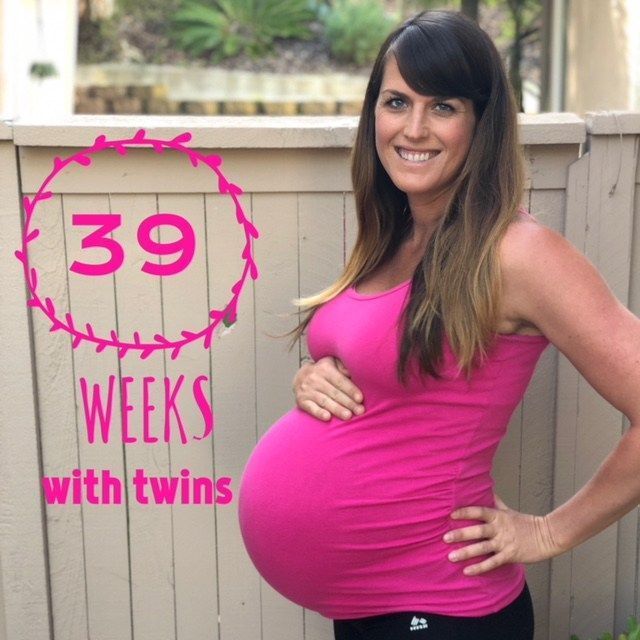 Closed eyelids cover their eyes, and tooth buds have already sprouted and put down roots in their gums. Their heads are large, accounting for about half of their size!
Closed eyelids cover their eyes, and tooth buds have already sprouted and put down roots in their gums. Their heads are large, accounting for about half of their size!
See a bigger picture
16 WEEKS: Twins in the womb
Fine hair called lanugo is developing on the twins' heads, and their skin is almost transparent. They can grimace and make sucking motions. Their hearts are pumping blood, and they have started peeing out the amniotic fluid they've been swallowing. You can see their sex organs during an ultrasound.
See a bigger picture
20 WEEKS: Twins in the womb
Talk to your twins – their ears are protruding, and they may be able to hear you now! Lanugo now covers their body. To protect their skin from its immersion in amniotic fluid, it's developing a greasy white coating called vernix. Eyebrows and eyelashes are formed, and your babies can accidentally scratch themselves with their fingernails now. Meconium – made up of digestive secretions, sloughed cells, and swallowed amniotic fluid – is collecting in their bowels and will be their first bowel movement after birth. Things are starting to get a little crowded for them now as they grow bigger. And you may notice them becoming more active now. Your mid-pregnancy ultrasound (between 18 and 22 weeks) will identify the sex of your babies, if you like. The sizes of the babies and their heartbeats will be measured, along with the amount of amniotic fluid.
Things are starting to get a little crowded for them now as they grow bigger. And you may notice them becoming more active now. Your mid-pregnancy ultrasound (between 18 and 22 weeks) will identify the sex of your babies, if you like. The sizes of the babies and their heartbeats will be measured, along with the amount of amniotic fluid.
See a bigger picture
24 WEEKS: Twins in the womb
Your babies' skin is red and wrinkled now, no matter what color it will be after birth, and their eyebrows are growing in. They begin to store fat, and their lower airways are developing. They're growing more hair on their heads and taste buds on their tongues. Their bone marrow has started making blood cells. Testicles will descend into the scrotum of boy babies, and eggs are filling the ovaries of girl babies. The lungs aren't working fully, but they're formed and developing. The babies may even respond to sounds – such as music or your voice – by moving.
See a bigger picture
28 WEEKS: Twins in the womb
Your twins' brains are growing rapidly. Though they're sleeping most of the time (with eyelids closed), they can open their eyelids, which now sport eyelashes. They may even turn toward a light. Layers of fat are building up under their skin, smoothing it out. They can make grasping motions and suck their fingers, and you may feel them hiccupping. Their lungs are continuing to develop.
Though they're sleeping most of the time (with eyelids closed), they can open their eyelids, which now sport eyelashes. They may even turn toward a light. Layers of fat are building up under their skin, smoothing it out. They can make grasping motions and suck their fingers, and you may feel them hiccupping. Their lungs are continuing to develop.
See a bigger picture
32 WEEKS: Twins in the womb
The twins are growing quickly and continue to gain fat. All of their bones are formed but still soft. They're practicing breathing rhythmically, moving the amniotic fluid in and out of their lungs to help them develop. They can open and close their eyes, and nails now cover your babies' fingers and toes. Their arms, legs, and torsos are filling out. Some babies even have a full head of hair by now. At the same time, they're shedding the fine hair covering their bodies. Control of their body temperature is one of the very last things to develop, but they're getting better at it, thanks to their brain development. While their skulls will remain soft (allowing for an easier delivery), their other bones are hardening.
While their skulls will remain soft (allowing for an easier delivery), their other bones are hardening.
See a bigger picture
36 WEEKS: Twins in the womb
The average gestational age for twins at birth is 36 weeks. Their lungs are well developed by 34 weeks, and all body systems are now functioning. They spend their last few weeks building fat layers and putting on weight and shedding most of their body hair. The vernix (that waxy coating on their skin) thickens, and body fat increases. The average newborn twin weighs 5 1/2 pounds.
See a bigger picture.
Learn more:
- Fetal development: What does your baby look like now?
- Signs you're having twins or multiples
- Pregnant with twins: premature birth and other complications
- Twin birth video
- Likelihood of twins: can you increase your chances?
Was this article helpful?
Yes
No
Karen Miles
Karen Miles is a writer and an expert on pregnancy and parenting who has contributed to BabyCenter for more than 20 years.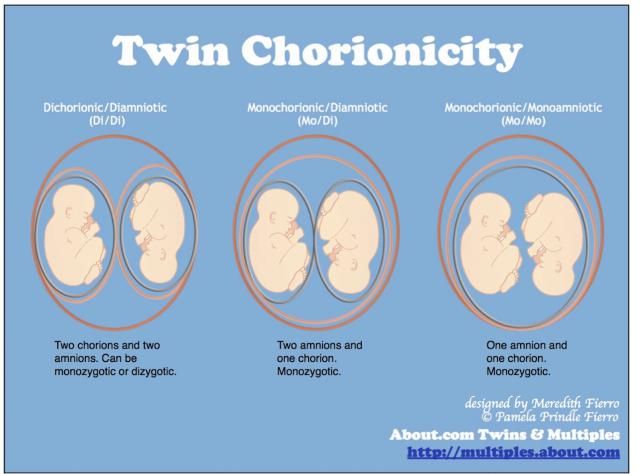 She's passionate about bringing up-to-date, useful information to parents so they can make good decisions for their families. Her favorite gig of all is being "Mama Karen" to four grown children and "Nana" to nine grandkids.
She's passionate about bringing up-to-date, useful information to parents so they can make good decisions for their families. Her favorite gig of all is being "Mama Karen" to four grown children and "Nana" to nine grandkids.
Advertisement | page continues below
My pregnancy week by week
Multiple pregnancy
Author: Mikheeva Natalia Grigoryevna, Malyshok magazine
A multiple pregnancy is a pregnancy in which two or more fetuses develop simultaneously in the uterus. Multiple pregnancy occurs in 0.4 - 1.6% of all pregnancies. Recently, there has been an obvious trend towards an increase in the incidence of such pregnancies due to the active use of assisted reproduction technologies, including in vitro fertilization (IVF). nine0005
Types of multiple pregnancies
Children born in multiple pregnancies are called TWINS. There are two main types of twins: monozygotic (identical, homologous, identical, similar) and dizygotic (fraternal, heterologous, different). African countries have the highest twin birth rate, Europe and the USA have an average rate, and Asian countries have a low rate.
African countries have the highest twin birth rate, Europe and the USA have an average rate, and Asian countries have a low rate.
Dizygotic (fraternal) twins are more common (in 66-75% of all twins). The birth rate of dizygotic twins varies from 4 to 50 per 1000 births. Dizygotic twins occur when two separate eggs are fertilized. The maturation of two or more eggs can occur both in one ovary and in two. The predisposition to develop dizygotic twins may be maternally inherited. Dizygotic twins can be either same-sex or opposite-sex, they look like each other like ordinary brothers and sisters. With fraternal twins, two placentas are always formed, which can be very close, even touching, but they can always be separated. Two fruit spaces (i.e., fetal bladders or two “houses”) are separated from each other by a septum consisting of two chorionic and two amniotic membranes. Such twins are called dizygotic dichorionic diamniotic twins. nine0005
Monozygotic (identical) twins are formed as a result of the separation of one fetal egg at various stages of its development. The frequency of birth of monozygotic twins is 3-5 per 1000 births. The division of a fertilized egg into two equal parts can occur as a result of a delay in implantation (immersion of the embryo in the uterine mucosa) and oxygen deficiency, as well as due to a violation of the acidity and ionic composition of the medium, exposure to toxic and other factors. The emergence of monozygotic twins is also associated with the fertilization of an egg that had two or more nuclei. If the separation of the fetal egg occurs in the first 3 days after fertilization, then monozygotic twins have two placentas and two amniotic cavities, and are called monozygotic diamniotic dichoriones (Fig. A). If the division of the ovum occurs between 4 - 8 days after fertilization, then two embryos will form, each in a separate amniotic sac. Two amniotic sacs will be surrounded by a common chorionic membrane with one placenta for two. Such twins are called monozygotic diamniotic monochorionic twins (Fig. B). If division occurs by 9- 10th day after fertilization, then two embryos are formed with a common amniotic sac and placenta.
The frequency of birth of monozygotic twins is 3-5 per 1000 births. The division of a fertilized egg into two equal parts can occur as a result of a delay in implantation (immersion of the embryo in the uterine mucosa) and oxygen deficiency, as well as due to a violation of the acidity and ionic composition of the medium, exposure to toxic and other factors. The emergence of monozygotic twins is also associated with the fertilization of an egg that had two or more nuclei. If the separation of the fetal egg occurs in the first 3 days after fertilization, then monozygotic twins have two placentas and two amniotic cavities, and are called monozygotic diamniotic dichoriones (Fig. A). If the division of the ovum occurs between 4 - 8 days after fertilization, then two embryos will form, each in a separate amniotic sac. Two amniotic sacs will be surrounded by a common chorionic membrane with one placenta for two. Such twins are called monozygotic diamniotic monochorionic twins (Fig. B). If division occurs by 9- 10th day after fertilization, then two embryos are formed with a common amniotic sac and placenta.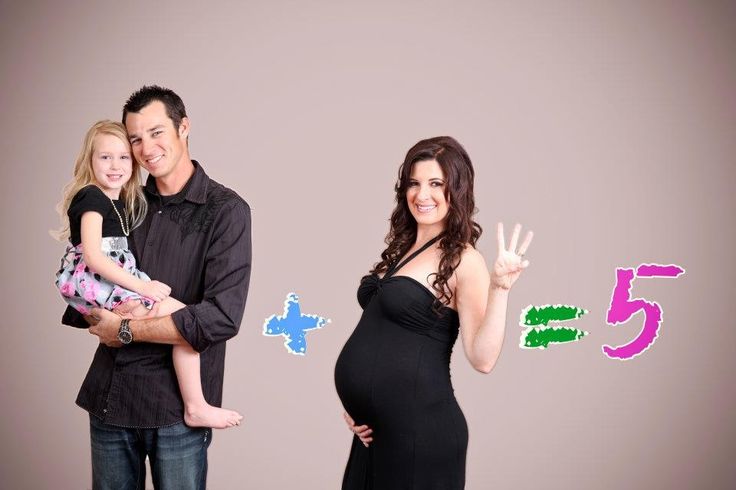 Such twins are called monozygotic monoamniotic monochorionic (Fig. B) If the egg is separated at a later date on the 13th - 15th day after conception, the separation will be incomplete, which will lead to the appearance of conjoined (undivided, Siamese) twins. This type is quite rare, approximately 1 observation in 1500 multiple pregnancies or 1: 50,000 - 100,000 newborns. Monozygotic twins are always the same sex, have the same blood type, have the same eye color, hair, skin texture of the fingers, and are very similar to each other. nine0005
Such twins are called monozygotic monoamniotic monochorionic (Fig. B) If the egg is separated at a later date on the 13th - 15th day after conception, the separation will be incomplete, which will lead to the appearance of conjoined (undivided, Siamese) twins. This type is quite rare, approximately 1 observation in 1500 multiple pregnancies or 1: 50,000 - 100,000 newborns. Monozygotic twins are always the same sex, have the same blood type, have the same eye color, hair, skin texture of the fingers, and are very similar to each other. nine0005
Twin births occur once in 87 births, triplets - once in 87 2 (6400) twins, quadruples - once in 87 3 (51200) triplets, etc. (according to the Gallin formula). The origin of triplets, quadruplets, and more twins varies. So, triplets can be formed from three separate eggs, from two or one egg. They can be monozygotic and heterozygous. Quadruples can also be identical and fraternal.
Features of the course of multiple pregnancy
In case of multiple pregnancies, the woman's body is subject to increased requirements.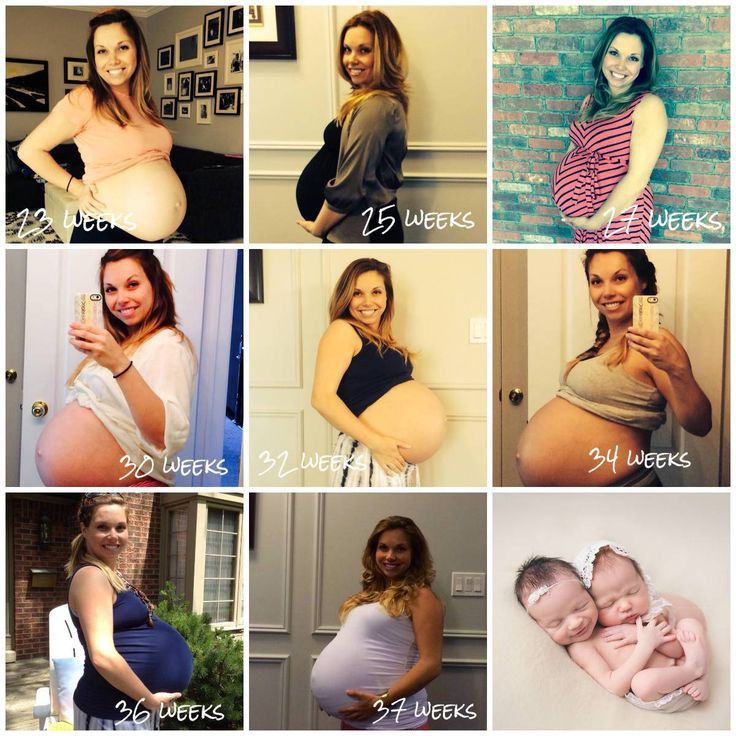 All organs and systems function with great tension. In connection with the displacement of the diaphragm by the enlarged uterus, the activity of the heart becomes difficult, shortness of breath, fatigue occur. Enlargement of the uterus, especially towards the end of pregnancy, leads to compression of the internal organs, which is manifested by impaired bowel function, frequent urination, and heartburn. Almost 4-5 times more often there is the development of preeclampsia, which is characterized by an earlier onset, a protracted and more severe clinical course, often combined with acute pyelonephritis of pregnant women. Due to the increased need and consumption of iron, iron deficiency anemia often develops in pregnant women. Significantly more often than with a singleton pregnancy, complications such as bleeding during pregnancy and childbirth, anomalies in labor, and a low location of the placenta are observed. Often, with multiple pregnancies, abnormal positions of the fetus occur. One of the most common complications in multiple pregnancy is its premature termination.
All organs and systems function with great tension. In connection with the displacement of the diaphragm by the enlarged uterus, the activity of the heart becomes difficult, shortness of breath, fatigue occur. Enlargement of the uterus, especially towards the end of pregnancy, leads to compression of the internal organs, which is manifested by impaired bowel function, frequent urination, and heartburn. Almost 4-5 times more often there is the development of preeclampsia, which is characterized by an earlier onset, a protracted and more severe clinical course, often combined with acute pyelonephritis of pregnant women. Due to the increased need and consumption of iron, iron deficiency anemia often develops in pregnant women. Significantly more often than with a singleton pregnancy, complications such as bleeding during pregnancy and childbirth, anomalies in labor, and a low location of the placenta are observed. Often, with multiple pregnancies, abnormal positions of the fetus occur. One of the most common complications in multiple pregnancy is its premature termination. Preterm birth is observed in 25-50% of cases of such pregnancies. nine0005
Preterm birth is observed in 25-50% of cases of such pregnancies. nine0005
The development of term twins is normal in most cases. However, their body weight is usually less (by 10% or more) than in singleton pregnancies. With twins, the weight of children at birth less than 2500 g is observed in 40-60%. The low weight of twins is most often due to insufficiency of the uteroplacental system, which is not able to adequately provide several fetuses with nutrients, trace elements and oxygen. The consequence of this is a delay in the development of the fetus, which is a common occurrence in multiple pregnancies. The mass of twins, respectively, decreases in proportion to their number (triplets, quadruplets, etc.). nine0005
With monochorionic twins in the placenta, anastomoses are often formed between the vascular systems of the fetus, which can lead to a serious complication - the syndrome of feto-fetal transfusion. In this case, there is a redistribution of blood from one fetus to another, the so-called "stealing". The severity of feto-fetal transfusion (mild, moderate, severe) depends on the degree of redistribution of blood through the anastomoses, which vary in size, number and direction.
The severity of feto-fetal transfusion (mild, moderate, severe) depends on the degree of redistribution of blood through the anastomoses, which vary in size, number and direction.
Diagnosis in multiple pregnancy
The most reliable method for diagnosing multiple pregnancies is ultrasound, which allows not only early diagnosis of multiple pregnancies, but also to determine the position and presentation of fetuses, localization, structure and number of placentas, the number of amniotic cavities, the volume of amniotic fluid, congenital malformations and antenatal fetal death, the state of the fetus from a functional point of view, the nature of the uteroplacental and fetal-placental blood flow. nine0005
In multiple pregnancies, due to the higher risk of complications, ultrasound monitoring is performed more frequently than in singleton pregnancies. With dizygotic twins, about once every 3-4 weeks, with monozygotic twins - once every 2 weeks.
In addition, examinations and control of clinical tests are carried out with great care, and CTG is regularly recorded from 28 weeks of pregnancy.
Birth management
Indications for caesarean section associated with multiple pregnancies are triplets (quadruple), the transverse position of both or one of the fetuses, breech presentation of both fetuses or the first of them, and not associated with multiple pregnancy - fetal hypoxia, anomalies labor activity, prolapse of the umbilical cord, extragenital pathology of the mother, severe gestosis, placenta previa and abruption, etc.
-
ECO
In the department of assisted reproductive technologies of the Maternity Hospital No. 2
, IVF is performed at the expense of the Republican budget for couples
who have received a positive decision from the Minsk city or regional commissions to provide one free IVF attempt.
No drug supply problem. There is no waiting list. nine0005 -
Farewoman
-
Individual care for patients
-
Ultrasound diagnostics
- whether the woman has her first childbirth;
- what is the shape of the pelvis;
- what is the position of the fetuses, is there any presentation;
- what is the state of health of the mother;
- how the pregnancy proceeded;
Curious facts are
0
, how many are the Geminis? up to 80 million pairs of twins.
The number of twins born in relation to the total number of newborns in different countries and on different continents is different, but in general the trend is such that it continues to grow. Compared with the 60s, the percentage of twins has increased from 1.18 to 2.78, that is, almost 2.5 times. nine0005
The largest number of children
The largest number of children born to one mother, according to official data, is 69. According to reports made in 1782, between 1725 and 1765. The wife of a Russian peasant Fyodor Vasiliev gave birth 27 times, giving birth to twins 16 times, triplets 7 times and 4 twins 4 times. Of these, only 2 children died in infancy.
The most prolific mother of our contemporaries is considered to be Leontina Albina (or Alvina) of San Antonio, Chile, who at 1943-81 years gave birth to 55 children. As a result of the first 5 pregnancies, she gave birth to triplets, and exclusively male.
Most birthed
The record 38 births are said to be Elizabeth Greenhillies Abbots-Langley, c. Hertfordshire, UK. She had 39 children - 32 daughters and 7 sons.
Hertfordshire, UK. She had 39 children - 32 daughters and 7 sons.
The largest number of multiple births in one family
Maddalena Pomegranate from Italy (b. 1839) had triplets born 15 times. nine0071 There is also information about the birth on May 29, 1971 in Philadelphia, Pennsylvania, USA, and in May 1977 in Bagarhat, Bangladesh, 11 twins. In both cases, no child survived.
Most fertile pregnancies
Dr. Gennaro Montanino, Rome, Italy, claimed to have removed, in July 1971, the embryos of 10 girls and 5 boys from the uterus of a 35-year-old woman who was 4 months pregnant. This unique case of 15-fertility was the result of infertility pills. nine0071 9 children - the largest number in one pregnancy - were born on June 13, 1971 by Geraldine Broadrick in Sydney, Australia. 5 boys and 4 girls were born: 2 boys were stillborn, and none of the rest survived more than 6 days.
The birth of 10 twins (2 boys and 8 girls) is known from reports from Spain (1924), China (1936) and Brazil (April 1946).
The father with many children
The largest father in the history of Russia is Yakov Kirillov, a peasant from the village of Vvedensky, who in 1755 was presented to the court in connection with this (he was then 60 years old). The first wife of a peasant gave birth to 57 children: 4 times four, 7 times three, 9once twice and 2 times once. The second wife gave birth to 15 children. Thus, Yakov Kirillov had 72 children from two wives.
Longest Birth Intervals for Multiple Pregnancies
Peggy Lynn of Huntington Pennsylvania, USA, gave birth to a girl, Hanna, on November 11, 1995, and the second of the twins, Erika, only 84 days later (February 2, 1996).
Siamese twins
United twins became known as "Siamese" after Chang and Eng Bunkers were born fused in the area of the sternum on May 11, 1811 in the Maeklong region of Siam (Thailand). They married Sarah and Adelaide Yates of pc. North Carolina, USA, and had 10 and 12 children, respectively. They died in 1874, and with a difference of 3 hours. nine0005
They died in 1874, and with a difference of 3 hours. nine0005
The science of twins - gemellology.
"Secret language"
Twins often talk to each other in a language that others do not understand. This phenomenon is called cryptophasia.
Left-handed twins
18-22% of left-handed twins (for non-twins this percentage is 10).
How does a twin pregnancy proceed? gently sloping booth "Leleka"
Before describing the course of multiple pregnancy, it should be noted that the course of pregnancy has individual characteristics for each woman. There are no universal recommendations that would suit absolutely all pregnant women with one fetus or with several. Therefore, in this article we have tried to describe the general points that are most common, and which should be paid attention to the expectant mother. nine0005
How to detect twin pregnancy
Thanks to modern diagnostic methods, multiple pregnancy can be detected at an early stage.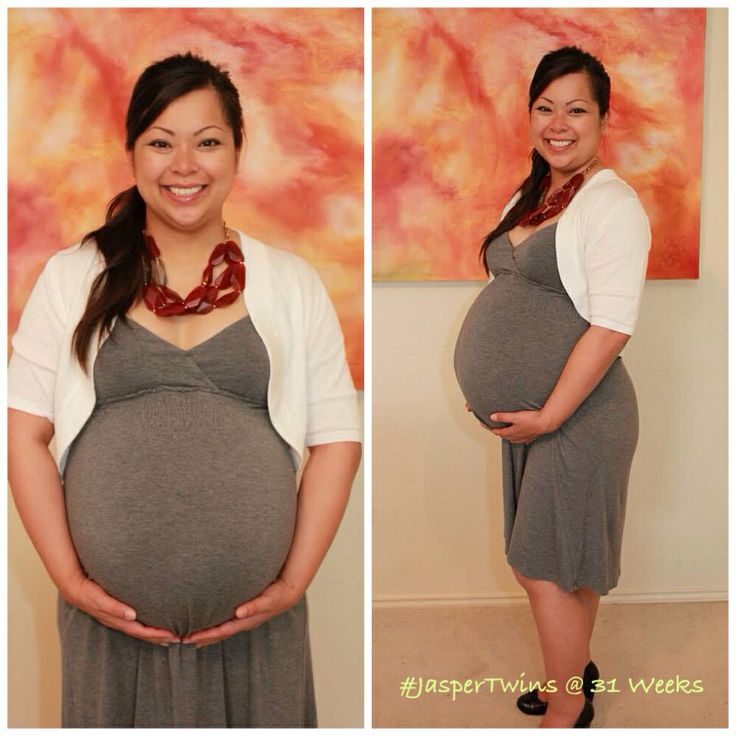 First, a doctor can diagnose twins during a routine examination - by noting the rapid increase in the size of the uterus or by hearing a double heartbeat. An experienced specialist can diagnose twins after 4 weeks of pregnancy. Secondly, twins are diagnosed during an ultrasound examination. This usually happens after 12 weeks. Prior to this, the expectant mother can only assume that she is carrying twins - for example, based on family history and the frequent occurrence of twins in the family. Blood tests are not yet a reliable way to determine twins. nine0005
First, a doctor can diagnose twins during a routine examination - by noting the rapid increase in the size of the uterus or by hearing a double heartbeat. An experienced specialist can diagnose twins after 4 weeks of pregnancy. Secondly, twins are diagnosed during an ultrasound examination. This usually happens after 12 weeks. Prior to this, the expectant mother can only assume that she is carrying twins - for example, based on family history and the frequent occurrence of twins in the family. Blood tests are not yet a reliable way to determine twins. nine0005
How twin pregnancy proceeds
All stages of fetal development in a multiple pregnancy occur at the same time as in a single fetus. Therefore, the expectant mother can focus on the usual calendar for pregnant women. There are two main risks that a woman must take into account: this is the burden on the mother's body and the increased likelihood of complications.
Great burden on the mother's body
Two fetuses develop in a woman's body at once. They require more oxygen, more nutrients, their vital activity leads to an increased load on the excretory system. Any infection or pathology immediately creates a risk for three at once: for the mother and for the second fetus. nine0005
They require more oxygen, more nutrients, their vital activity leads to an increased load on the excretory system. Any infection or pathology immediately creates a risk for three at once: for the mother and for the second fetus. nine0005
Therefore, during a multiple pregnancy, it is especially important for a woman to walk a lot in the fresh air, eat right and regularly, monitor body hygiene, and consult a doctor at the first alarming signs.
Increased likelihood of complications
Alas, not all women can bear two children normally. Approximately in the fifth part, the involution of the second fetal egg occurs: even in the first trimester, it freezes and decreases in size, while the second fetus continues to develop. nine0005
If both fetuses develop evenly, the difficulties do not end there. Due to the lack of iron in the mother's body, anemia, or anemia, can develop. Therefore, in multiple pregnancies, iron preparations are often prescribed.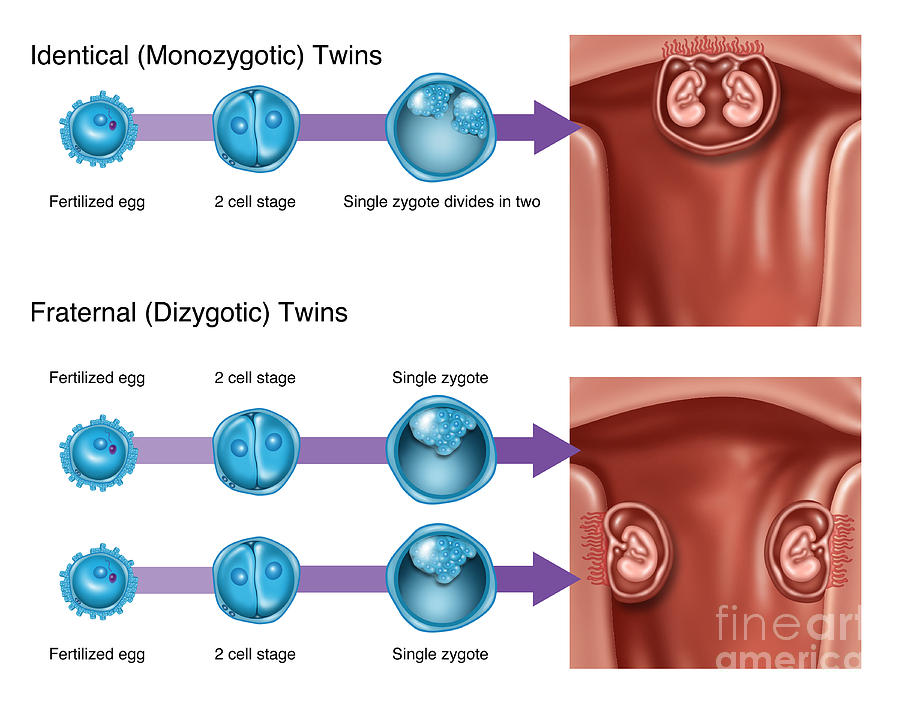
Due to the large weight of the abdomen in the later stages, placenta or fetal previa may form. The placenta blocks the exit from the uterus, or the position of the fetus makes natural childbirth impossible. In these cases, resort to caesarean section. nine0005
Premature aging of the placenta and premature birth - due to the fact that the placenta has to provide oxygen and nutrients to two fetuses at once, it quickly wears out and ages. Because of this, and also because of a number of similar reasons, premature birth can begin. To reduce the risk of preterm labor, pregnant women may be prescribed drugs that relax the muscles.
Is it necessary to have a caesarean section during pregnancy with twins
No. Indications for caesarean section are formed after the examination and take into account many factors:
If all these questions are answered satisfactorily, vaginal delivery may be recommended.